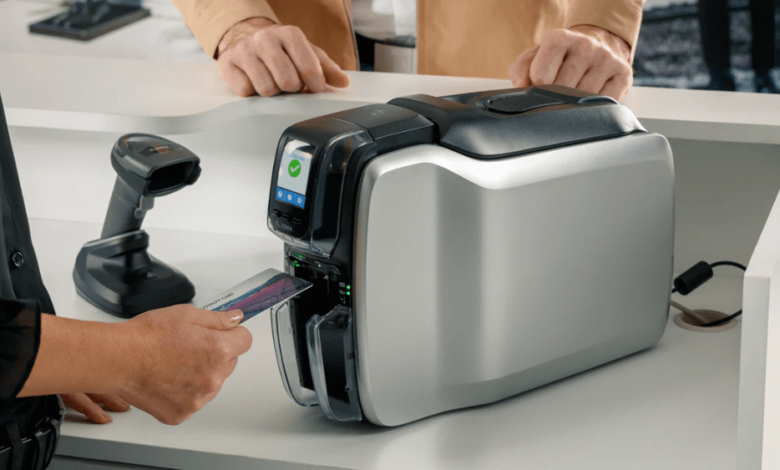Common Troubleshooting Tips for ID Card Printer Issues

ID card printers are essential for businesses, schools, and government agencies. However, like any equipment, they can experience technical issues that disrupt operations. Whether you’re dealing with print quality problems, card jams, or connectivity errors, knowing how to troubleshoot your ID card printer can save time and frustration.
Many common ID card printer issues stem from simple causes like dirty print heads, incorrect settings, or worn-out supplies. Before calling technical support, try these practical solutions. Proper maintenance and quick troubleshooting can extend your printer’s lifespan while ensuring consistent, high-quality card output.
Resolving Poor Print Quality Issues
Faded colors, streaks, or blurry text often indicate print head problems. First, check if the ribbon is installed correctly and has enough remaining length. Run a cleaning cycle using your printer’s built-in maintenance tools. If streaks persist, manually clean the print head with an approved cleaning swab and solution.
Incorrect temperature settings may also cause poor print quality. Adjust the heat settings based on the card material and ribbon type. Always use manufacturer-recommended supplies, as third-party ribbons and cards may not perform optimally. Regularly replacing consumables prevents gradual quality degradation in your ID card printer.
Fixing Card Jams and Feeding Problems
Card jams rank among the most frustrating ID card printer malfunctions. When cards get stuck, power off the printer before attempting removal, and use the manufacturer-provided jam tool to gently extract the card without damaging internal components. Check for debris in the card path and clean rollers with a lint-free cloth.
Feeding issues often stem from warped or damaged cards. Always store cards in a cool, dry place to prevent warping. Ensure you’re using the correct card thickness setting in the printer driver. If multiple cards feed simultaneously, replace the pickup roller for better traction.
Solving Connectivity and Driver Errors
When your ID card printer doesn’t communicate with your computer, start by checking physical connections. Ensure USB or Ethernet cables are securely plugged in at both ends. Try different ports or cables to rule out hardware failures. Restart both the printer and computer to reset the connection.
Outdated or corrupted drivers frequently cause printing problems. Download the latest drivers from the manufacturer’s website and reinstall them. Verify you’ve selected the correct printer model in your software settings. Confirm the IP address hasn’t changed for network printers and firewall settings allow communication.
Addressing Ribbon Loading and Recognition Errors
Modern ID card printers use smart ribbons with embedded chips. If your printer doesn’t recognize a new ribbon, verify it’s the correct type for your model. Then, remove and reinsert the ribbon cartridge, ensuring it snaps firmly into place. Finally, clean the ribbon sensor with compressed air to remove dust buildup.
Error messages about ribbon length often appear when the printer can’t detect the ribbon end. Manually advance the ribbon slightly if it’s stuck. For persistent errors, try a different ribbon cartridge to determine if the issue lies with the ribbon or printer. Always store ribbons in their original packaging to prevent damage.
Maintaining Your ID Card Printer for Optimal Performance
Regular maintenance prevents most common ID card printer issues. Follow the manufacturer’s recommended cleaning schedule for print heads, rollers, and sensors. Keep the printer clean, away from dust and direct sunlight. Use only approved cleaning kits to avoid damaging sensitive components.
Track your printer’s usage and replace worn items like rollers and print heads before they fail. Keep a log of maintenance activities and error messages to identify recurring problems. Proper care significantly reduces downtime and repair costs over your printer’s lifespan.
Troubleshooting Encoding and Smart Card Problems
If your ID card printer fails to encode magnetic stripes or smart chips, verify that the encoding module is properly installed. Then, check that the card’s magnetic stripe or chip aligns with the encoder position. Test with different cards to determine if the issue is card-specific.
Ensure your software supports the card’s chip type to prevent smart card encoding errors. Update the printer firmware and encoding software to the latest versions. Clean the encoder heads with a specialized cleaning card if contact-based encoding fails. Always use high-quality cards designed for encoding to prevent data errors.
See also Instagram vs. TikTok: Which Platform Is Best for Your Content?
Keeping Your ID Card Printer Running Smoothly
Most ID card printer issues have simple solutions when you understand the underlying causes. Regular cleaning, proper supplies, and correct settings prevent most problems. Documenting errors and maintenance helps identify patterns and prevent future issues.
When troubleshooting fails, consult your printer’s manual or contact technical support. Investing time in proper ID card printer care pays off through reliable performance and professional-quality output. With these tips, you can minimize downtime and keep your card production running efficiently.





